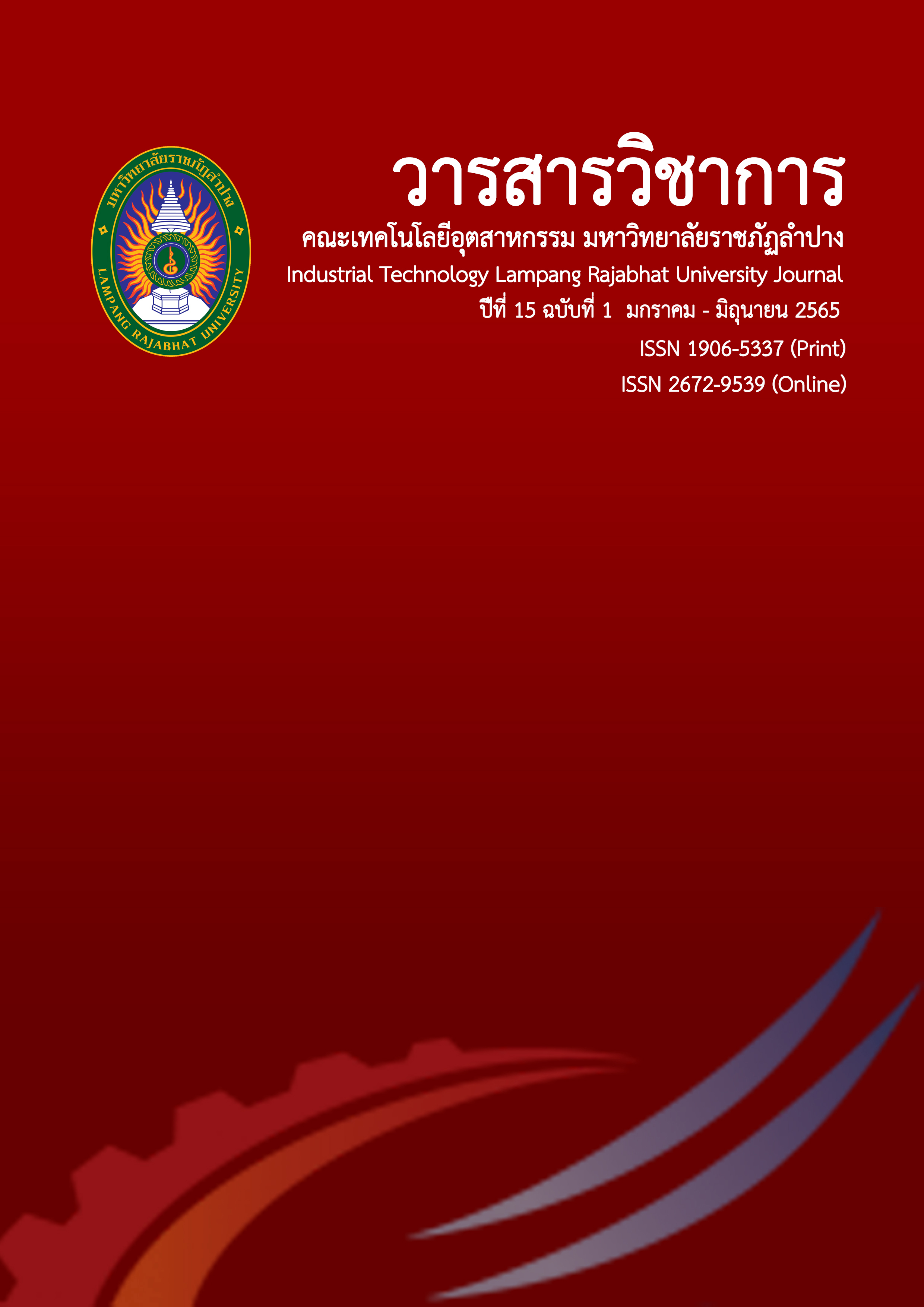Study on Properties of Clayed Soil from Sediment Trapping Sump of Mae Moh Mine for Use in Ceramic Works
Keywords:
Pottery; Clay Soil; Mae Moh mineAbstract
This research aimed to analyze the properties of clayed soil from the sediment trapping sump of Mae Moh mine, Lampang province for use in ceramics production. The soil was sampled from the sump and cleaned by washing and removing the impurities. The clayed soil was then analyzed for chemical and mineral compositions using X-ray fluorescence and X-ray diffraction instruments. The main compositions were silica, alumina, and iron oxide in the forms of quartz, muscovite, kaolinite, and hematite. The clay soil had high plasticity because it contained more than 67% of fine particles. After firing at temperatures ranging from 1000-1200 o C, it was found that the clay body was sintered well at 1100 o C. The lost weight was 9.70% and the shrinkage value was 4.54%. It had porosity of 0.27%, water absorption of 1.40%, and a reddish-brown color after firing. The strength was measured with a bending strength value of 13.38 MPa. It was found that the clayed soil was suitable for hand molding or jiggering. The resulting ceramics had properties like terracotta. Therefore, it is possible to use the clayed soil, a waste product from the sediment trapping sump in the Mae Moh mine, in the ceramic industry.
References
Babisk, M. P., Amaral, L. F., da Silva Ribeiro, L., Vieira, C. M. F., do Prado, U. S., Borlini, M. C., Oliveira, M. S., da Luz, F. S., Monteiro, S. N., & da Costa Garcia Filho, F. (2020). Evaluation and application of sintered red mud and its incorporated clay ceramics as materials for building construction. Journal of materials Research and Technology, 9(2), 2186-2195. https://doi.org/10.1016/j.jmrt.2019.12.049.
Bordeepong, S., Phansuke, P., & Sukolrat, A. (2019). Study of mineralogy. chemical composition and physical properties of clays from Local pottery areas Rongang community Pattani province. RMUTK Science and Technology Journal, 13(1), 17-29. (in Thai).
Hamza, A., Kocserha, I., Geber, R., & Buzimov, A. (2019). Plasticity of Red Mud and Clay Mixtures. IOP Conference Series: Materials Science and Engineering, 613, 1-7. https://doi.org/10.1088/1757-899X/613/1/012051.
Karawek, S., Khonthon, S., Intarapadung, A., & Thiamtham, T. (2019). Development of ready-mix soil from tap water sediment for pottery. Research Journal Phranakhon Rajabhat: Science and Technology, 14(1), 117-135. (in Thai).
Kowuttiphong, P. (2017). Development of a clay mixture from Ban Nong Yang soil for stoneware pottery product. Industrial technology Lampang Rajabhat University Journal, 10(2), 60-74. (in Thai).
Nattratip, W. (2017). A study of the ratio of Huepai village clay with grog for pottery product forming. Industrial Technology Lampang Rajabhat University Journal, 10(2), 85-94. (in Thai).
Veiga Simao, F., Chambart, H., Vandemeulebroeke, L., Nielsen, P., & Cappuyns, V. (2021). Turning Mine Waste into a Ceramic Resource: Plombieres Tailing Case.Journal of Sustaionable Metallurgy, 7. 1469-1482. https://doi.org/10.5194/egusphere-egu21-7639.
Downloads
Published
Issue
Section
License
Copyright (c) 2022 Industry Technology Lampang Rajabhat University

This work is licensed under a Creative Commons Attribution-NonCommercial-NoDerivatives 4.0 International License.






